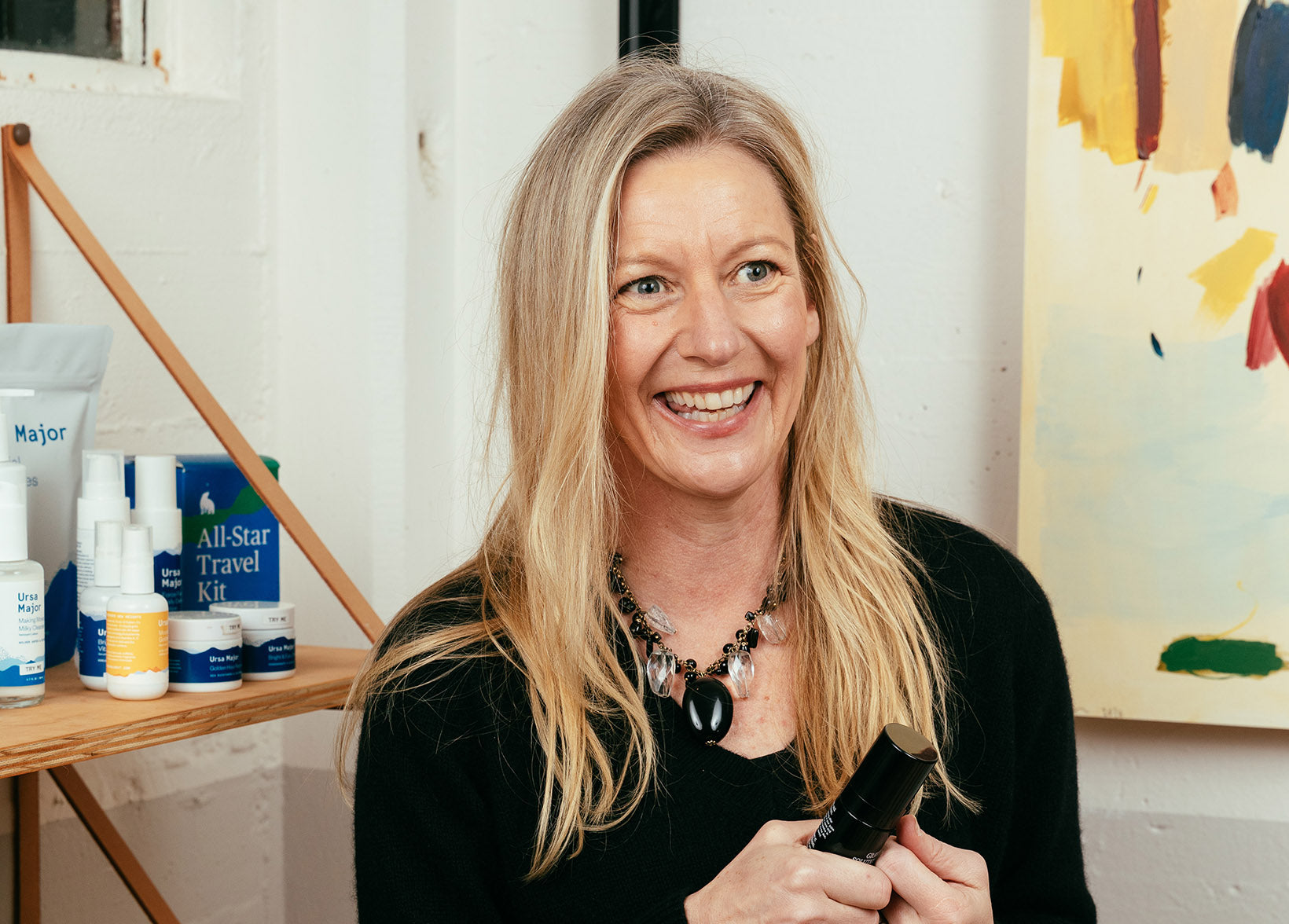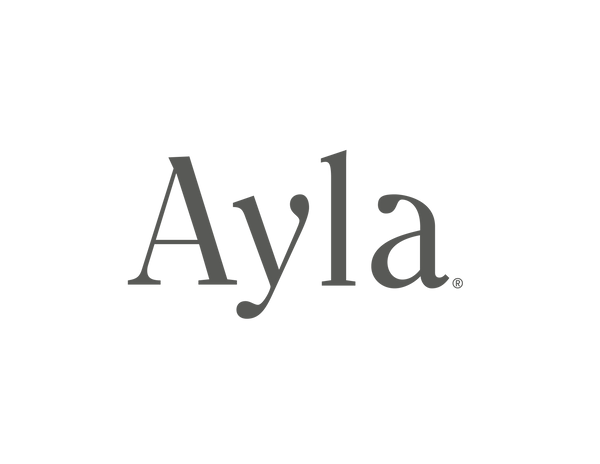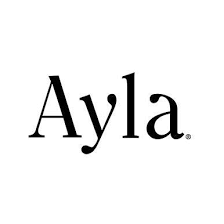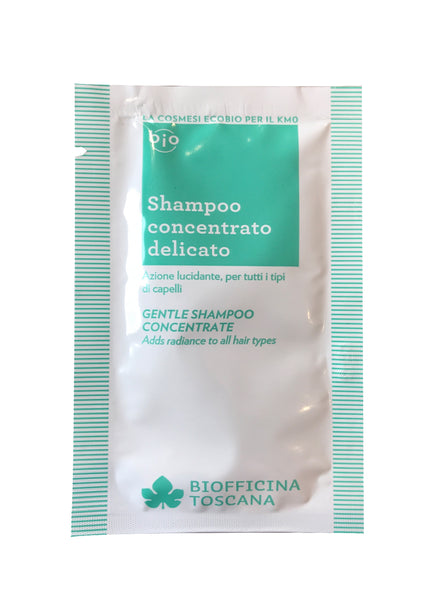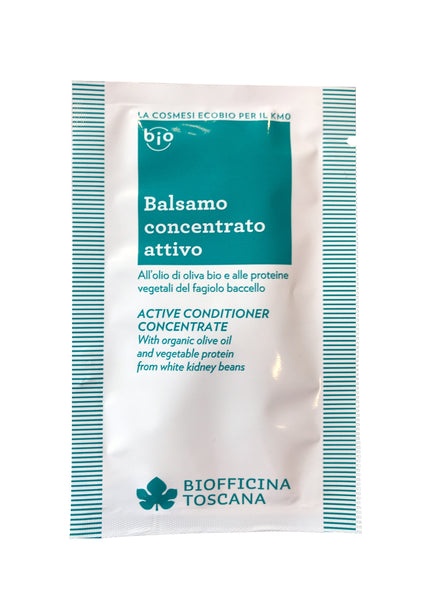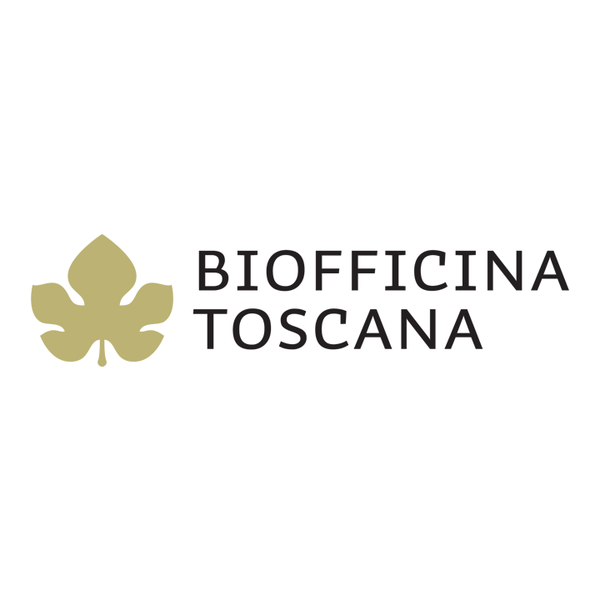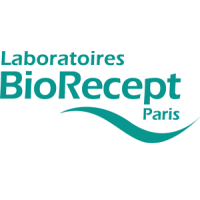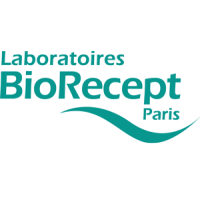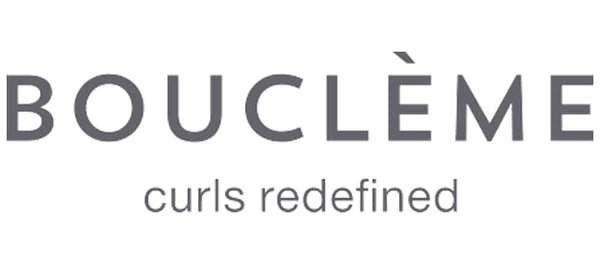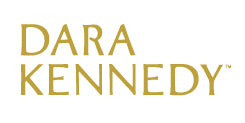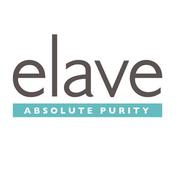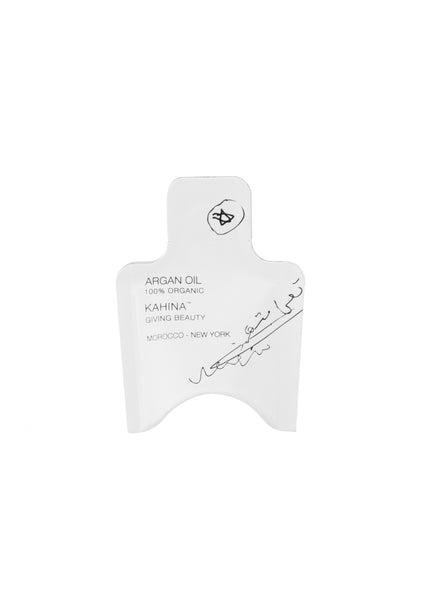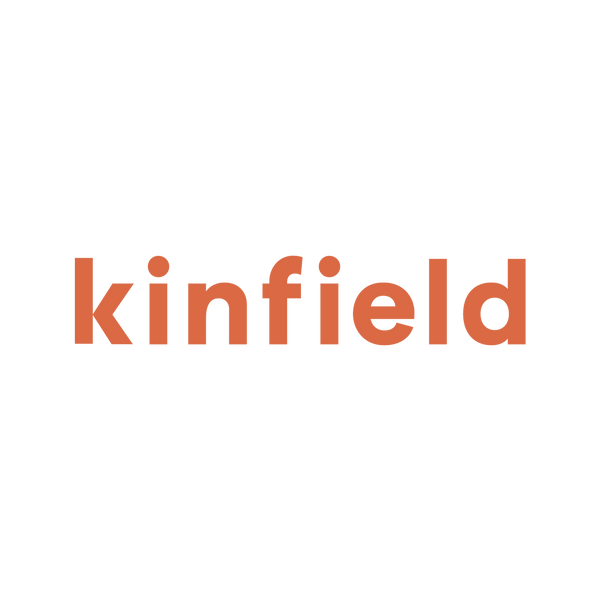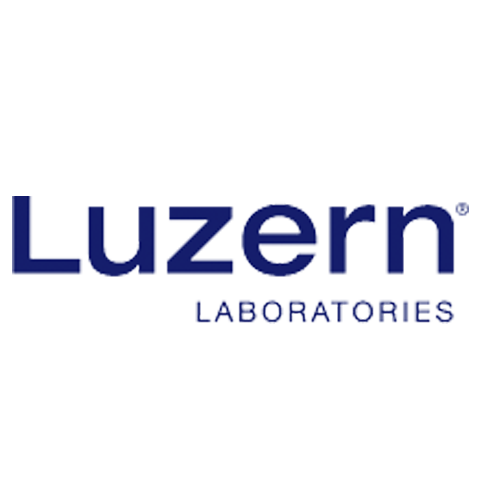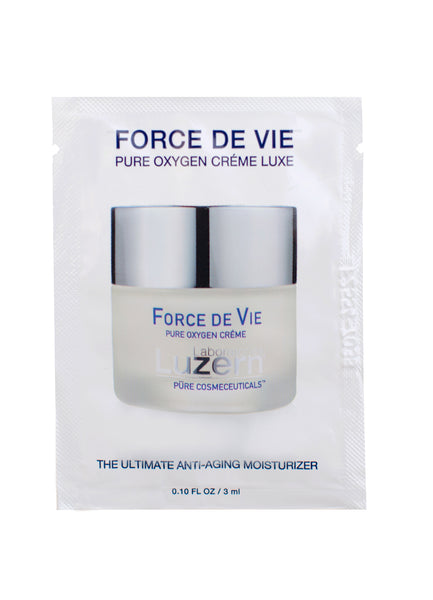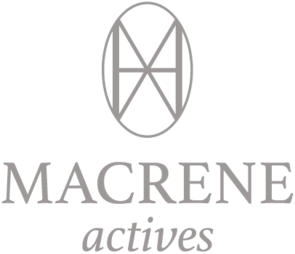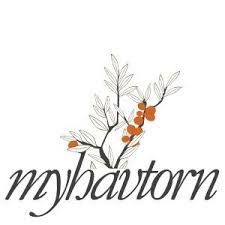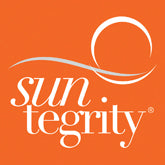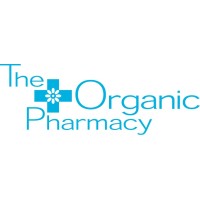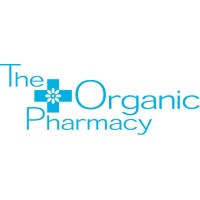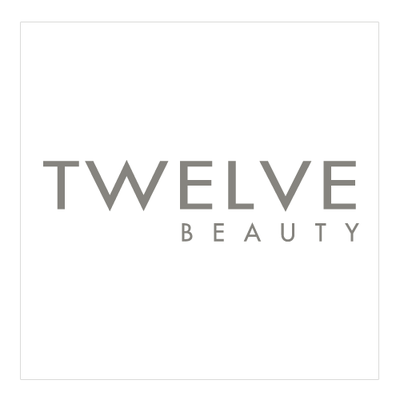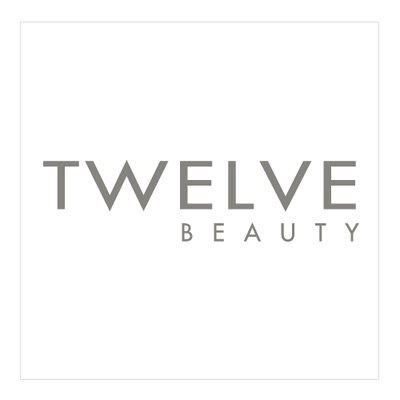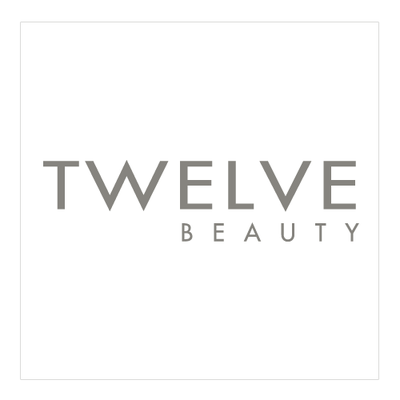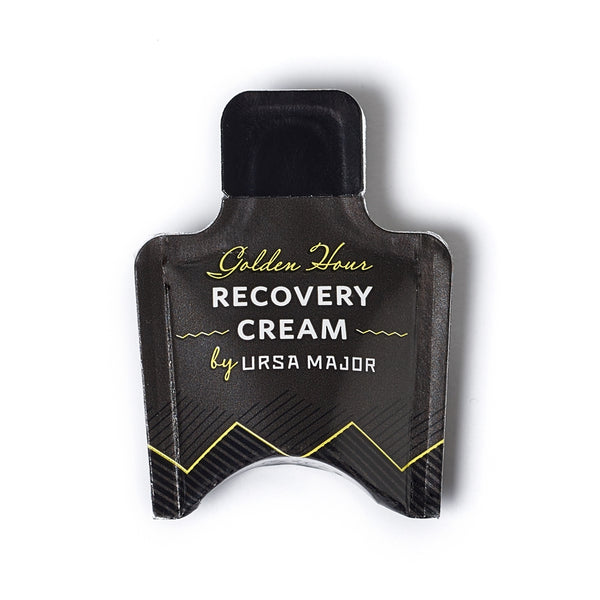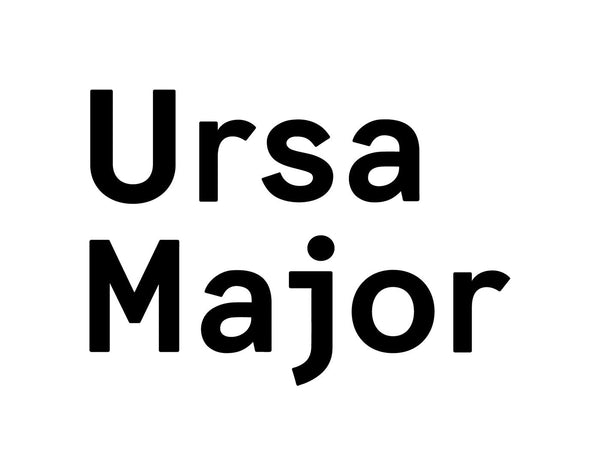Recent Articles
How TCM can help treat rosacea from the inside out
With Anna Hsieh Gold, L.Ac, DACM, Diplom.OM, FABORM

Dr. Anna Hsieh Gold is one of the Bay Area’s most sought after practitioners of TCM and the creator of her own line of herbal tinctures. She's also a key collaborator of star facialist Kristina Holey's — the two superwomen have worked together to crack the toughest skincare situations with internal and external protocols that have been life-changing for their clients.
Here, Dara interviews Anna about the latest addition to her lineup of tinctures: ROSY, designed specifically for rosacea and similar inflammatory skin conditions.
**
Dara: Why did you decide to create a tincture for rosacea?
DR. ANNA GOLD: Well, this whole line started from my work with Kristina, as you know: I wanted to cover the most common dermatological disorders that we treated together, addressing them from a TCM perspective.
I had rosacea in mind from the beginning of our collaboration. It’s interesting: unlike acne, which I’ve been treating with the CLEAR tincture since I first went into practice, I didn’t start seeing a lot of rosacea until I began working with Kristina. But it’s very common, and I think it’s frequently misdiagnosed. There’s a rough estimate that up to 20% of the people in the US have rosacea, but it’s often misdiagnosed as acne or dermatitis because it can be transient and harder to recognize.
Dara: How do you typically recognize it?
ANNA: What makes it hard is that it comes and goes. Rosacea is characterized by facial redness — usually around the cheeks, nose, forehead, and chin — but it gets worse and better.
And at times, it’s accompanied by swelling, burning,spider veins, and bumps that look like pimples.
For me, the giveaways are dilated blood vessels and flushing, although I often see different types of flushing and it tends to be exacerbated by temporary factors like stress, endocrine dysfunction like hormones irregularity, foods, and sun exposure.
People sort of learn to live with it and think it’s just part of having pale skin. There’s no one cure that works for everyone, and so until it gets really bad, people often don’t really want to address it.
Dara: Can you walk us through the typical treatments for rosacea?
ANNA: From a Western perspective, the typical treatments you see are antibiotics, oral acne drugs (which are lumped together with rosacea due to the inflammatory aspects of both conditions), and topical ointments. Sometimes laser therapy can be used to treat rosacea. But what’s often not addressed are other ways to address inflammation – through diet, for example, or stress and sleep, which can also negatively impact rosacea.
In contrast, when I use herbal treatments, they have to effectively treat the patterns and conditions I see in these disorders, but they also come with a diet and lifestyle component. It’s all connected.
Dara: Tell us how you see rosacea from a TCM perspective.
ANNA: It’s funny — for such a hard-to-pin-down condition, the TCM diagnosis is actually very clear cut.
Rosacea is considered to be Chi and heat stagnation, and Blood stagnation in the lung and stomach channel; they are meridians that hit the areas where rosacea, flushing, and erythema can happen. The lungs open onto the nose and the sides of the nose, and the stomach channel goes up to the cheeks.
In TCM, the lungs and the stomach have strong relationships with one another. So when you have this Blood and heat stagnation, there’s not a lot of circulation, which leads to heat buildup that then comes out in the channels leading to the face.
We also think of it as “cold invading the face.” But that can come from food, or start as a cold invasion — the wind cold settling on the skin. Washing your face with ice-cold water (according to TCM textbooks) can lead to Blood stagnation, and a lack of Chi and blood flow in the face.
Dara: So it can sort of come from both places, which might explain why it comes and goes and can be so hard to treat.
ANNA: Yes, and it’s exacerbated by hormones and even by emotions. Different emotions are connected to different organs; in this case, you have worry (spleen/stomach) and sadness (lungs). So being embarrassed or worried about the flushing can lead to more flushing, and over time, the redness starts to turn purple.
Alcohol is another thing that has a major impact. If you think about the initial stages of rosacea, you might see a little pinkness or redness. But if you have the constitution that predisposes you to it, and you drink alcohol, for example, we think of that as creating “dampness,” and that blocks the circulation, too.
Dara: OK, so tell us about this magical tincture, ROSY.
ANNA: First, it contains lots of blood-moving herbs to revitalize the nutrients in the blood; if you can encourage circulation, it brings nutrients to the microvessels and capillaries, and those nutrients will help with their repair. When you have any redness or bruising in the face, you have to move the blood to stimulate repair. So ROSY has Sichuan lovage, Chinese peony root with bark, artemis flower — lots of blood tonics to help with this. Dong Quai and Rehmannia help nourish the blood, too.
Then there are heat-draining herbs. Mineral gypsum cools heat specifically in the stomach channel: it’s nourishing, but cooling.
And then there’s turmeric, which is actually a common ingredient in TCM along with other approaches like ayurveda; it’s been shown to help rosacea in clinical trials.
There are also flowers in the formula that help with superficial parts of the body because they’re “light”: they address the superficial layer of the skin. And dandelion leaf helps flush out the liver, which supports the rest of the formula.
Dara: Comprehensive!
ANNA: Yes, it cools the blood, nourishes the blood, increases microcirculation, strengthens the capillaries, and helps drain the heat from the lung and stomach channels.
Dara: So when someone comes into your clinic and they leave with a bottle of ROSY, are they coming in to see you specifically for rosacea? Or do you see it occurring in combination with other challenges?
ANNA: I’m usually seeing people with rosacea for other problems, actually. A lot of people who struggle with it don’t want to target it specifically because they think that they can’t.
But I frequently see it with people who come in for gynecological issues, or other skin issues that have been misdiagnosed (rosacea is really underdiagnosed). I often see it with acne.
I also often see it when someone has other cardiovascular issues, like spider veins, which makes sense since it’s also a cardiovascular issue.
I see it a lot with autoimmune issues; it often accompanies eczema and psoriasis.
And I see it a lot in combination with stomach and digestive issues.
Dara: Speaking of digestive issues, what are the diet and lifestyle tips you most frequently share when someone has rosacea?
ANNA: The first thing I tend to suggest is to eat an anti-inflammatory diet. If possible, identify food triggers and avoid them — sometimes we need to figure out if a patient has a histamine intolerance, in which case they need to avoid fermented foods. I often see that avoiding alcohol, sugar, gluten, and dairy — all the good stuff — really helps.
So does adding in lots of dark, leafy greens to help with liver detoxification and to nourish beneficial gut bacteria with fiber. Balanced meals with lots of veggies feed the gut microbiome. And if you can’t eat fermented foods, I often suggest a good probiotic.
And I always advise working on sleep. Rosacea is an autoimmune-LIKE disease that’s often concurrent with other autoimmune conditions, and sleep is huge in treating those.
Light exercise often helps to get moderate blood flow going. Stress management. And staying out of the sun is helpful, too. These are all the things that we know, but it’s good to re-state them. We all need reminders!
And there are topical adjustments that can help, too. I like Marie Veronique’s Soothing B3 serum; a diluted apple cider vinegar compress can help; LED light therapy can be good for calming inflammation, too. And facial acupuncture is actually really good for rosacea because it activates the circulation in the face.
Dara: Can you combine ROSY with another tincture?
ANNA: I prefer to work on one thing at a time from a TCM point of view, usually, but you can combine my tinctures and use up to two at a time. Sometimes I’ll give CLEAR and ROSY to a patient experiencing acne and rosacea together. And the combination of ELEVATE and ROSY can be really helpful for menopausal flushing.
The great thing about Eastern medicine that many people who are unfamiliar with it don’t realize is that, unless you have a specific allergy to mushrooms, for example, or another ingredient in the tincture, you’ll find it’s a good way to address systemic issues without the side effects you might experience with Western medicine.
**
Check out the full lineup of Dr. Anna Gold's tinctures here.
Ready to learn more about how TCM can be used to treat a variety of conditions ranging from insomnia to acne? Check out these additional interviews with Anna on our blog:
Traditional Chinese Medicine 101 with Dr. Anna Gold
Kristina Holey & Anna Gold on the Dr. Anna Gold tinctures
Dr. Anna Gold on Herbal Supplements for Perimenopause & Menopause
Insomnia & TCM: a deep dive into Dr. Anna Gold's Build Sleep
Stress & anxiety relief through herbs: Dr. Anna Gold on Balance
Boosting the immune system naturally with herbs: Dr. Anna Gold weighs in
About Anna: a Doctor of Acupuncture and Chinese Medicine, Licensed Acupuncturist, and Fellow of the American Board of Oriental Reproductive Medicine — with additional advanced degrees (in Traditional Oriental Medicine and Constitutional Facial Acupuncture), years of practice, and thousands of happy clients — Anna Gold is one of the most sought-after acupuncturists in the Bay Area, known not only for her skill in treating challenges ranging from infertility to asthma, but also for her partnership in treating skin conditions with Kristina Holey. Prior to her career in Traditional Chinese Medicine, Anna was an instructor at Jivamukti Yoga in New York. And before studying yoga, Anna graduated with a Bachelor's degree in Comparative Literature from Berkeley, where she also completed all the prerequisites for medical school.
Any topic discussed in this article is not intended as medical advice. If you have a medical concern, please check with your doctor.

